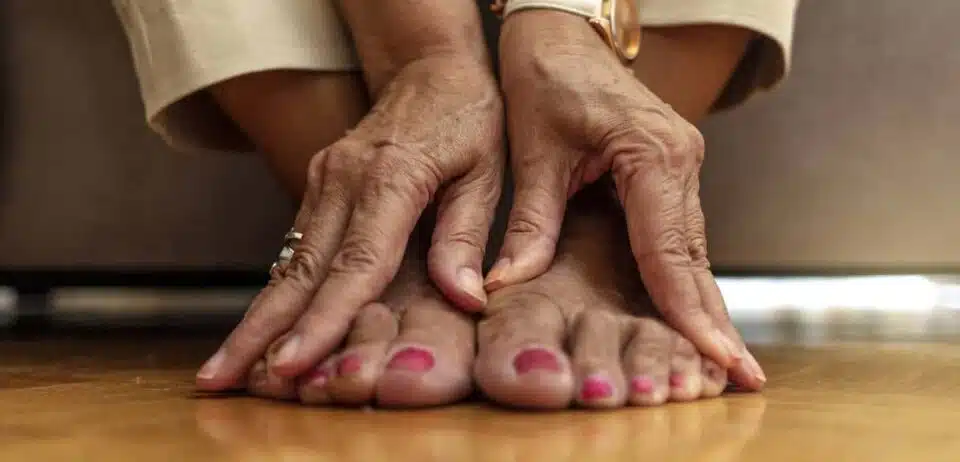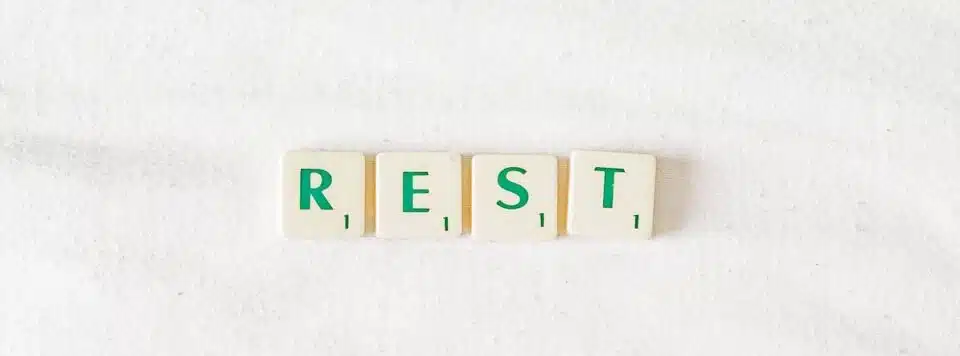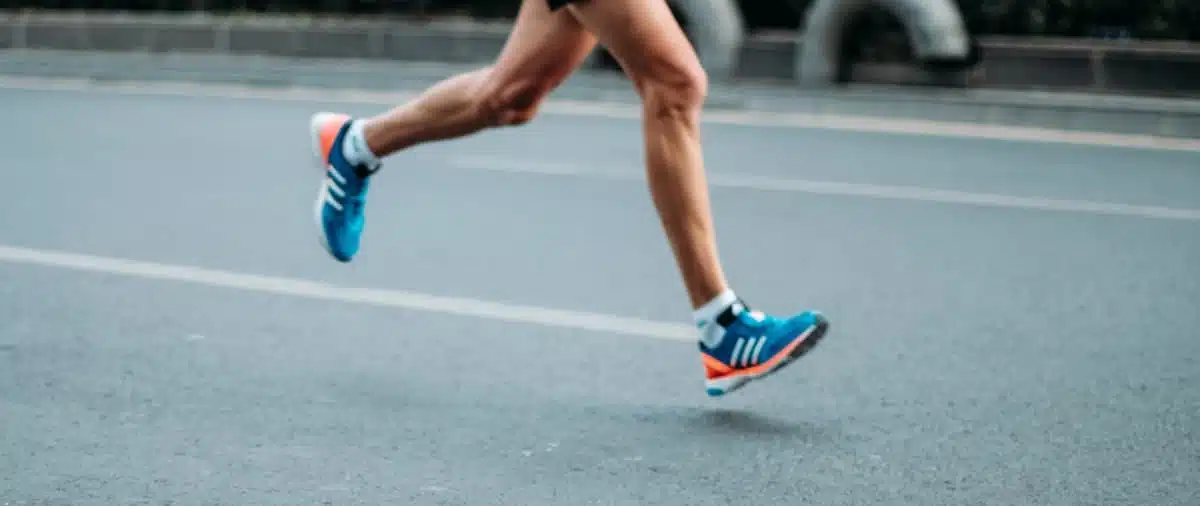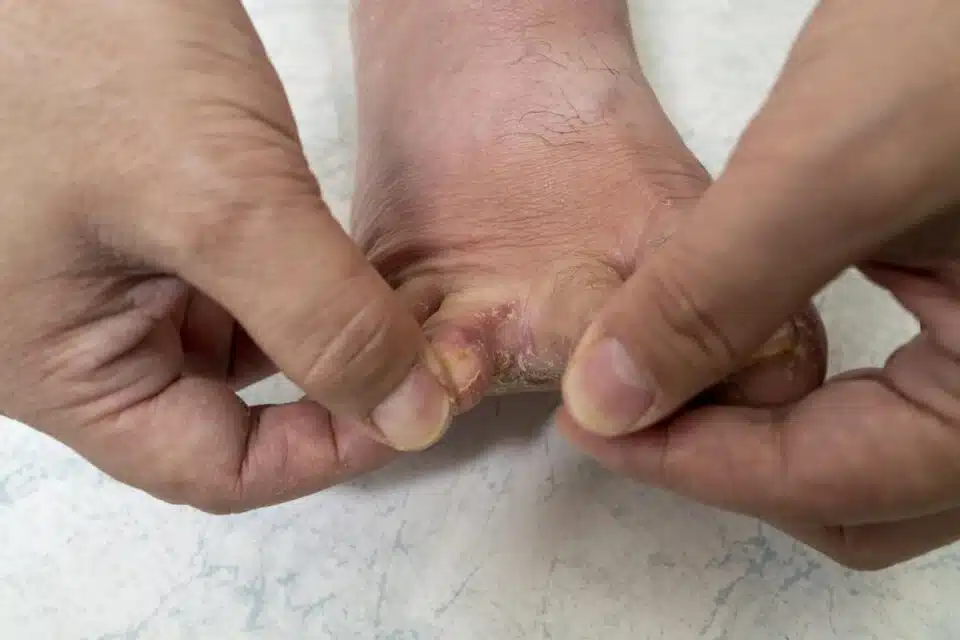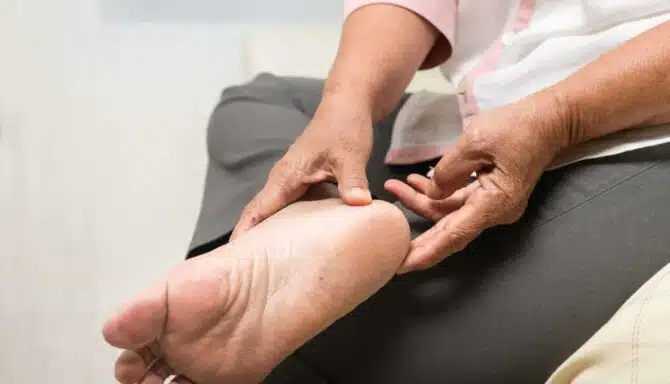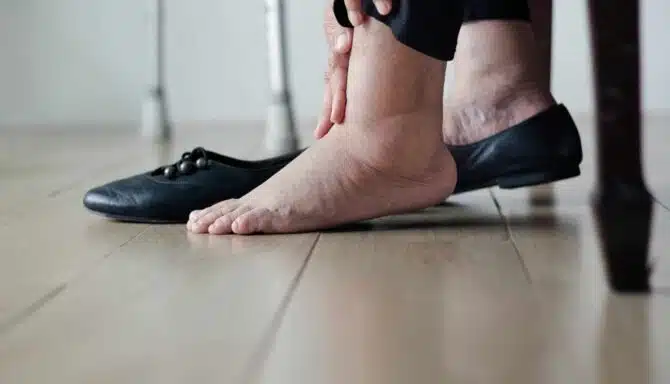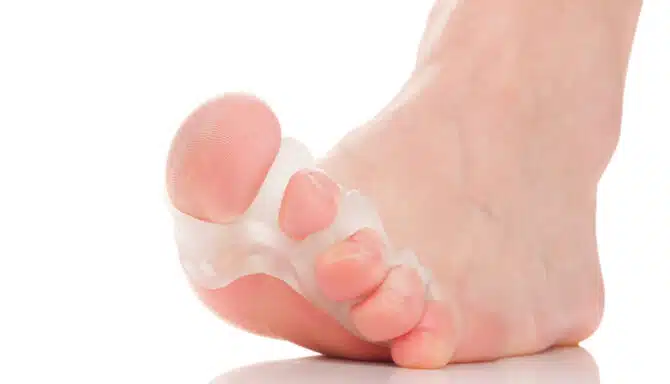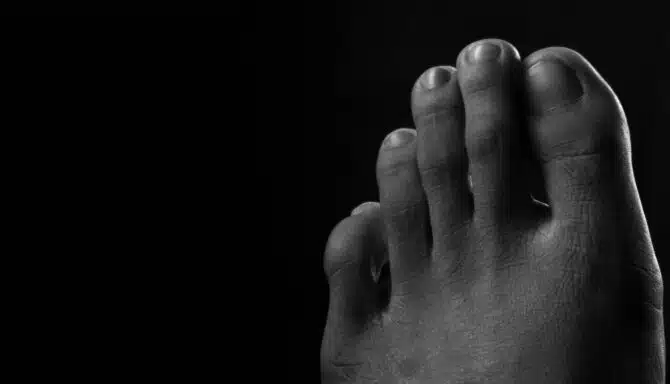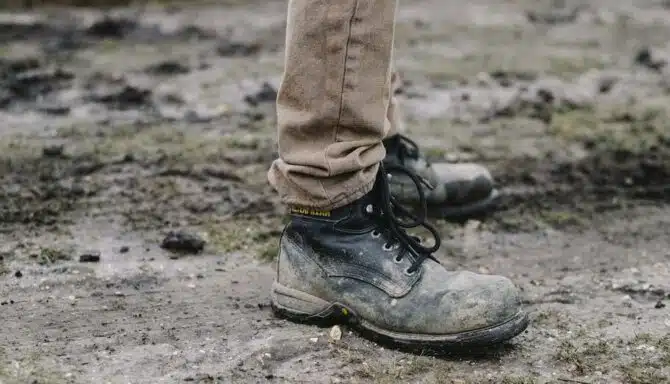The top of your foot is one of the most common areas to experience everyday foot pain. The muscles and tendons within the top side of your foot play a critical part in how you move. The top of the foot can be easily overworked and damaged, leading to various foot conditions.
Some symptoms and top-of-foot conditions are short-lived. Other top-of-foot symptoms can signal an underlying condition elsewhere in your foot or leg.
This article teaches about five potential causes (and solutions) for top-of-foot pain.
Cause 1: Foot Sprain
A foot sprain occurs when the ligaments in your foot stretch beyond their limit and become damaged. Foot sprains can vary in location. An ankle sprain is likely to be more of a forefoot sprain. A midfoot sprain is more likely to affect the front half of your foot.
Cause: Acute trauma causes foot sprain. Acute trauma refers to a one-time impact of an incident where you put your foot in an awkward or uncomfortable position. Your tendons are stretched beyond their limit and lose some elasticity. Your tendons may develop micro tears or more serious strains. More severe forms of acute trauma can result in a stress fracture or a hairline break of the bone.
Solution: Foot sprains require rest and recovery to heal. Rest allows your tendons to repair themselves and regain their elasticity. Ice and elevating your legs above your body can help promote healing and may quicken the recovery process. If the injury persists, or you have difficulty moving, you should visit your family doctor.
Taping can also act as an additional support system. A chiropodist can skillfully tape your feet. Taping works by providing additional support and “locking” your feet to avoid re-aggravating the injury.
Cause 2: Tendonitis
Inflammation of the tendons in the foot can cause top-of-foot pain. Damage to the tendons is known as tendonitis.
Cause: Extensor tendonitis can cause pain in the top of the foot. The extensor tendons are the tendons that run along the topside of your foot. The tendons help you straighten your feet and lift your toes. The extensor tendons play a critical role when running or walking. Chronic damage through overuse injuries can cause extensor tendonitis. Too much walking or running, or even too much of a weight-intensive activity too soon after any injury can cause extensor tendonitis.
Solution: The best course of action for tendonitis is rest. Specifically, you want to avoid the source activity that causes aggravation. If the pain is intense, you can also take over-the-counter medications and visit your family doctor. They may refer you to a massage or physiotherapist. If the tendonitis persists or is disrupting your mobility, you should visit your family doctor.
Cause 3: Athlete’s Foot
Athlete’s foot is a contagious fungal skin infection that affects the skin on the feet. Although athlete’s foot, medically known as tinea pedis, sounds like it only affects sporty folks, it can affect anyone. Although not life-threatening, it’s contagious and can be painful if left untreated.
Cause: A fungus called dermatophytes causes athlete’s foot. The fungus inhabits, grows, and survives off the outer layer of the skin. By extension, the fungus can also spread to other parts of the body and people, either directly or indirectly.
You can catch athlete’s foot anywhere where fungus thrives. Fungi love warm, moist environments, such as communal showers, locker rooms and the decks around public swimming pools.
Solution: Over-the-counter topical antifungals are the most common remedy for mild cases of athlete’s foot in the early stages. However, fungal infections are notoriously persistent and stubborn. If your Athlete’s foot persists, you should see a chiropodist, who can treat the skin on your feet and prescribe prescription anti-fungal creams. Our Toronto foot clinic also sells foot deodorants, including an antifungal foot spray, which are great for prevention and supplementing your athlete’s foot treatment.
While treating your athlete’s foot infection, it’s essential to do the following:
- Clean your socks and linens with bleach or hot water. The fungus can spread from your feet to these surfaces and re-infect you if not cleaned between uses.
- Clean any surfaces that your bare feet come into contact with
- Wash your feet once or more a day
- Ensure your feet are thoroughly dry after bathing or washing.
- Wear flip-flops or shoes in any place where you think you could catch athlete’s foot
Cause 4: Bone bruise
Damage to the bone itself can be painful and cause top-of-foot pain. There are varying degrees of bone damage, ranging from bruises to fractures.
Cause: A bone bruise is an acute injury, less severe than a fracture. Bone bruises typically stem from a one-time event that causes damage to the foot. Dropping an object, rolling your ankle, or stubbing your foot on an object can cause damage to the bone itself. You may notice bruising (reddish/blueish) on the skin. When in doubt, an X-ray can determine the severity of a bone bruise.
Solution: Treatment for a bone bruise includes the following:
- Rest
- Icing
- Elevating your leg so it’s above your heart (to promote blood flow and reduce swelling)
- Taking anti-inflammatories or over-the-counter medications if the pain is intense
Cause 5: Peroneal nerve injury
Nerve damage can cause top-of-foot pain. The general term for nerve damage is known as peripheral neuropathy. When nerves are damaged, signals between your muscles and brain are disrupted, causing numbness, pain, and complete loss of sensation.
Cause: Injury to the peroneal nerve, known as peroneal nerve dysfunction, can cause top-of-foot pain. The peroneal nerve is outside our lower leg and just below the knee.
For example, you may experience temporary numbness in your feet from peroneal nerve compression. Have your legs crossed, and your feet and toes go numb? Peroneal nerve compression causes the numbing and tingling sensation.
There are several symptoms of peroneal nerve dysfunction. Signs can include:
- Foot drop
- Pain, weakness, or numbness on the top of the foot
- Inability to move the toes up and down
- Reduced mobility in the foot
- Abnormal knee lift to compensate for reduced motor function
Solution: You should visit your family doctor at the first sign of any nerve-related symptoms. They will conduct the necessary diagnostic investigations and refer you to the appropriate doctors. There are both surgical and nonsurgical treatments for peroneal nerve injury.
Non-invasive treatments include orthotics, which can correct your gait and better distribute pressure within your feet. Additionally, physical therapy and foot-strengthening exercises to fortify the muscles in your feet can help improve mobility. If you have foot drop, an ankle-foot orthotic may be recommended.
You may require surgical treatment for more severe cases, including decompression surgery or nerve repair.
Other causes of top-of-foot pain
- Tarsal tunnel syndrome: Tarsal tunnel syndrome occurs when the nerve inside one of the tunnels within your ankle compresses. Specifically, the posterior tibial nerve (within the tarsal tunnel) is compressed from injury, flat feet, or fallen arches.
- Bone spurs: Hallux rigidus, or arthritis of the big toe joint can cause bone spurs, which can lead to pain on the top of the foot. The bony outgrowths can put pressure on your foot or toe when wearing shoes and cause pain when lifting your toes due to the deteriorated joint.
- Ganglions: Ganglion cysts are fluid-filled bumps on the tendons or joints in the feet. The cyst itself doesn’t cause pain, but if large enough, it can add pressure to the nerves in the same vicinity.
